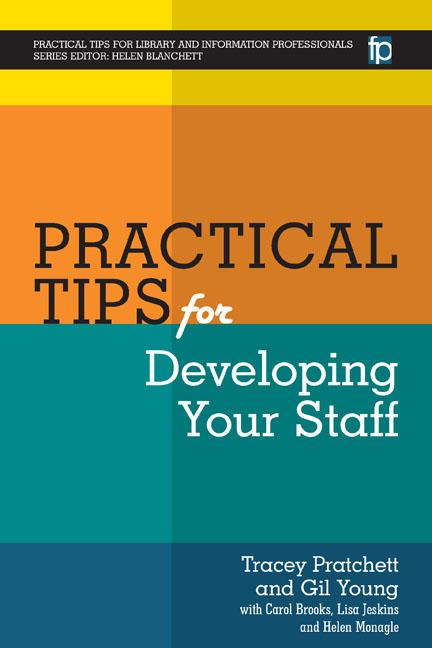Book contents
- Frontmatter
- Contents
- List of figures and tables
- Acknowledgements
- The authors
- List of abbreviations
- Series Editor's introduction
- Introduction
- Section 1 Theories
- Section 2 Infrastructure
- 11 Why develop staff?
- 12 Workforce planning
- 13 Job descriptions
- 14 Person specifications
- 15 Advertisements
- 16 Shortlisting
- 17 Interviews
- 18 Interviews – presentations and tests
- 19 Interviews – feedback
- 20 Inductions
- 21 Managing performance
- 22 Team development plans
- 23 Appraisals – preparing
- 24 Appraisals – conducting
- 25 Setting objectives
- 26 One-to-ones
- 27 Feedback – general
- 28 Team building
- 29 Team meetings
- 30 Sharing learning with the team
- 31 Writing references
- 32 Exit interviews
- 33 Effective handover
- Section 3 Activities and tools
- Index
27 - Feedback – general
from Section 2 - Infrastructure
Published online by Cambridge University Press: 09 June 2018
- Frontmatter
- Contents
- List of figures and tables
- Acknowledgements
- The authors
- List of abbreviations
- Series Editor's introduction
- Introduction
- Section 1 Theories
- Section 2 Infrastructure
- 11 Why develop staff?
- 12 Workforce planning
- 13 Job descriptions
- 14 Person specifications
- 15 Advertisements
- 16 Shortlisting
- 17 Interviews
- 18 Interviews – presentations and tests
- 19 Interviews – feedback
- 20 Inductions
- 21 Managing performance
- 22 Team development plans
- 23 Appraisals – preparing
- 24 Appraisals – conducting
- 25 Setting objectives
- 26 One-to-ones
- 27 Feedback – general
- 28 Team building
- 29 Team meetings
- 30 Sharing learning with the team
- 31 Writing references
- 32 Exit interviews
- 33 Effective handover
- Section 3 Activities and tools
- Index
Summary
PROVIDING STAFF WITH feedback on their performance as individuals and as a team is an important part of performance management. It enables individuals to be clear about what is expected of them and assists them in identifying areas they need to develop.
If you hold regular one-to-ones with your staff you will have plenty of opportunities to provide feedback. It should be a way of enabling two-way communication between yourself and the individuals you line manage. It is not about telling people what to do, rather it is a means of encouraging them to think about and reflect upon their own performance. Done well, providing regular feedback should enhance an individual's confidence and improve their overall performance.
The principle behind feedback is that it is about the individual and their performance. It should not be about things they cannot change and it should be relevant to their role. There are numerous models of proving feedback. A quick search on the internet for ‘feedback models’ will provide you with lots of examples for you to select one which suits your style of management and which you feel comfortable with.
If you are new to providing feedback you might need to prepare in advance what you are going to say. Points to reflect on in preparation for providing feedback include the following:
• Think about what you want the outcome of the feedback to be. What is the skill, knowledge or behaviour that you want changed or encouraged?
• Can you provide a clear example of what you are providing feedback on? It is not good practice to provide feedback on something that you have not witnessed yourself or that you do not have clear evidence of.
• Consider the questions you might want to ask the individual to encourage them to reflect on the situation under discussion. What do they think happened? What do they think went well? What would they do differently in future? What support do they need to make any changes? The idea is for the individual to take ownership of their own performance and work to improve or maintain it.
- Type
- Chapter
- Information
- Practical Tips for Developing Your Staff , pp. 63 - 65Publisher: FacetPrint publication year: 2016

